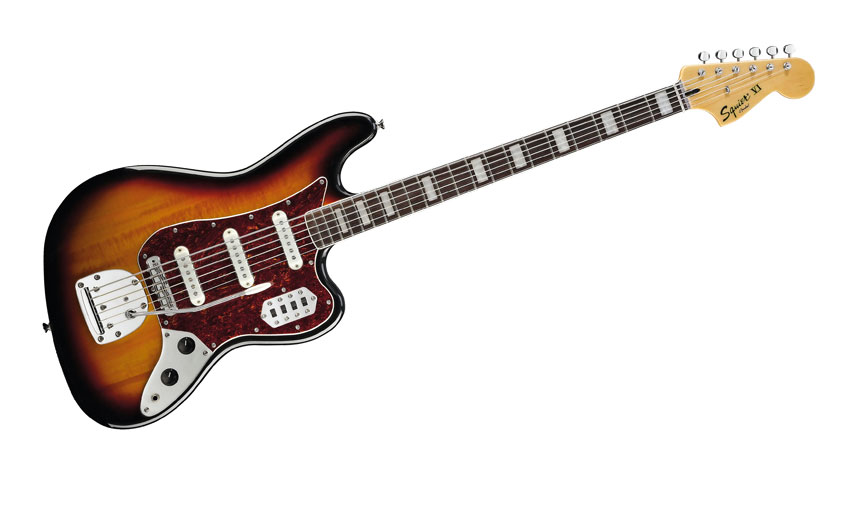MusicRadar Verdict
Whether your playing encompasses 60s surf, post-rock or anything else for that matter, at this price, the Squier Bass VI is a no-brainer.
Pros
- +
Excellent fit and finish for the price. Absorbing tones.
Cons
- -
It's hard to fault for the money.
MusicRadar's got your back
While the laws of taste and decency dictate that the correct number of strings for an electric bass guitar is four, the Fender Bass VI is the exception that proves the rule.
Introduced in 1961 as a competitor to the Danelectro UB2, the Bass VI's 30-inch scale, trio of single-coil pickups and Jazzmaster-style vibrato marked it out as more of a natural lead instrument despite being designed to be tuned an octave below a conventional guitar.
"Its unique sound and achingly cool looks saw the original Bass VI find favour with Jet Harris and Jack Bruce"
Its unique sound and achingly cool looks saw the Bass VI find favour with Jet Harris and Jack Bruce, while Lennon and Harrison both used one during sessions for The White Album, Let It Be and Abbey Road.
The model was discontinued in 1975, and original examples now command prices way beyond the mortal pocket. But happily, NAMM 2013 saw the Bass VI revived, albeit in streamlined form, in Fender's Pawn Shop Series for £826. We reviewed it and found it to be a thoroughly inspirational ride, but the price may still be a little off-putting for something that most would regard as a luxury rather than essential purchase.
Enter from stage left, then, this much more affordable new Squier Vintage Modified model. It shares the Fender's 762mm (30-inch) scale and modern C-shape neck, but resurrects the individual on/off pickup slider switches and low cut 'strangle' switch that featured on the second iteration of the Bass VI, which followed the Jaguar's introduction in 1962.
Out of the box, it's strung with wound 0.025 to 0.095 strings compared with the Pawn Shop's factory-fitted 0.024 to 0.084s, which lend it more of a bass-like response compared to the Fender's baritone-style feel. It's worth experimenting with gauges and tunings to see what best suits.
The Squier's fit and finish is excellent for the price and the floating vibrato bridge is smooth and stable despite the lack of a locking mechanism - just be prepared to give it a little more welly than you would a regular six-string's whammy!
Want all the hottest music and gear news, reviews, deals, features and more, direct to your inbox? Sign up here.
Sounds
If you've never played a Bass VI before you're in for a mind-expanding treat; full chords work best when you choose root notes from A upwards, but even partial chords are rich with harmonic overtones. Into a clean amp, just add reverb and vintage-style tremolo and be prepared to lose hours.
The bridge pickup and 'strangle' switch are particularly useful with added drive, but this is such a versatile and expressive instrument overall that if you're using it to layer parts in the studio you might find that you don't reach for a regular electric guitar at all, such is the range and depth on offer.
With street prices currently as low as £274, it's difficult to find a reason not to recommend a musical tool as useful and inspirational as this. Much more than just a retro curio, the Bass VI is a must-try for forward- thinking musicians.
Chris Vinnicombe worked with us here on the MusicRadar team from the site's initial launch way back in 2007, and also contributed to Guitarist magazine as Features Editor until 2014, as well as Total Guitar magazine, amongst others. These days he can be found at Gibson Guitars, where he is editor-in-chief.
